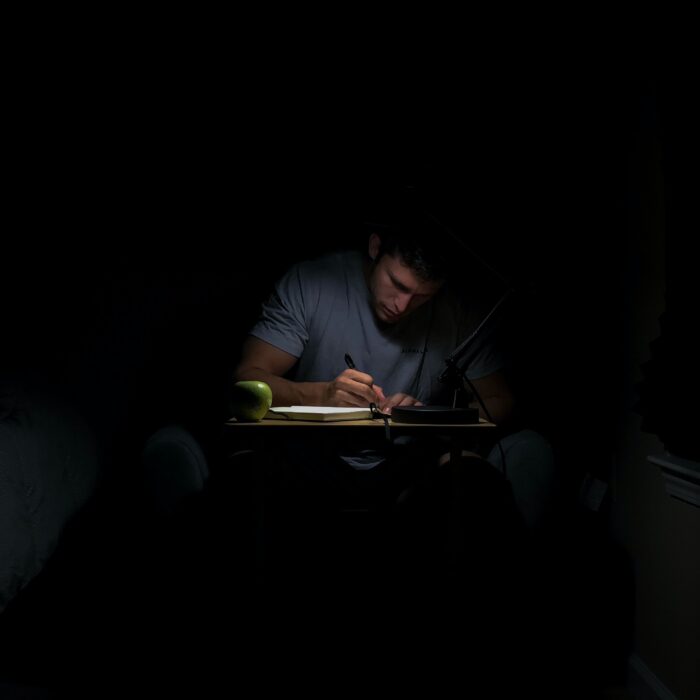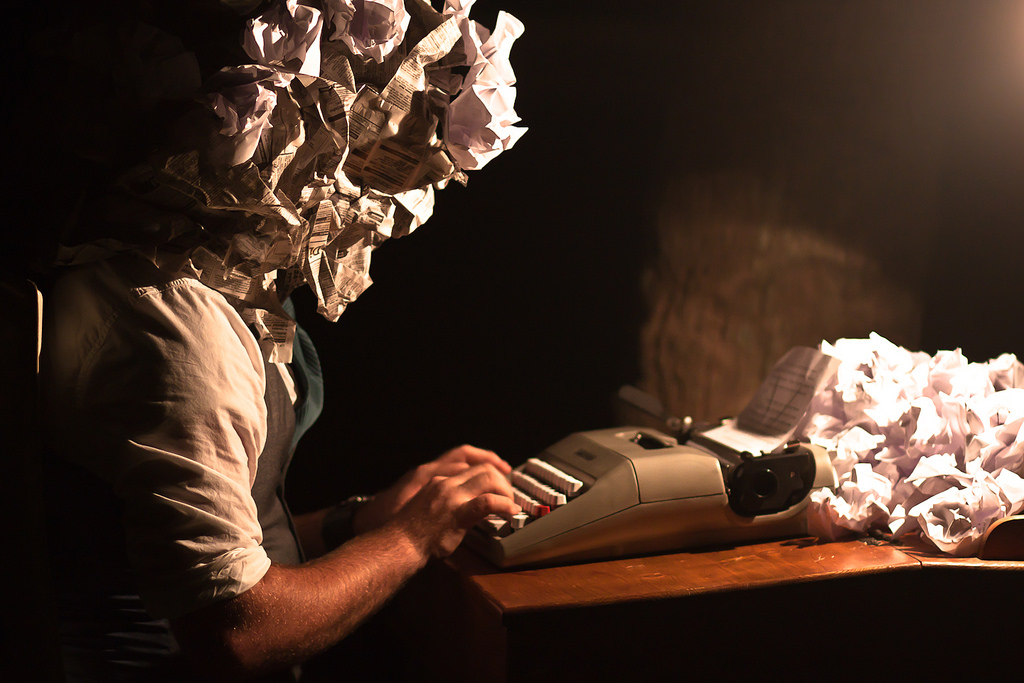You have no items in your cart. Want to get some nice things?
Go shopping
I’ve been having trouble coming up with ideas for this article. It’s my first piece for this new blog, after all, so the pressure is on to make a good first impression. Sensing the deadline looming like a black cloud, I sat down yesterday morning and tried to brainstorm. Hours pass, no ideas; biro barely meets blank page. I almost fell asleep at the desk. My lethargy has bred tiredness which, coupled with a growing temptation to leave the work until tomorrow, attracts me to bed. And I’m on the verges of sleep, when all of a sudden an idea arrives, unannounced and puncturing my dreams. I’m just awake enough to know I should write it down, in ham-fisted notes almost incomprehensible. The light goes off again, and I return to the verges of sleep; and it happens again.
Why do ideas arrive in this pattern? Perplexed and unable to sleep, I thought I’d turn on the laptop and do a little research. It seems writers of all kinds find the night time, and especially the grey area between wake and sleep, to be a period of great invention. Dave Eggers, American author, editor of influential the ‘McSweeney’s publication and all around affable literary champion, comments that when he is writing “I have to do it late at night, on caffeine, and in a lot of pain. I need about eight hours of fiddling around for every 1 hour of productive work. But that’s the way it is. It doesn’t seem worth it if you’re writing during the day. It’s so safe. Because without the pain, is it art?” He also notes that “procrastination is the creation of an exciting life by manufacturing tension, because suddenly you’re off on this great adventure.”
The night time does seem to hold an attraction for authors. Time stands still in the small hours, the night draped in the constant dark blanket of night. J. D. Salinger used to write under bed sheets by torch-light, when at military school, and later when he was drafted into the army. His short stories frequently revolve around the illustrious New York – dwelling Glass family, a group of industrious New Yorkers, and he gave members of the family many of his nocturnal traits. Second oldest Glass male Buddy, an English professor living in the outskirts of the city, narrates 1963’s novella ‘Seymour: An Introduction’. Buddy is attempting to come to terms with his older brother’s suicide by documenting his memories in print, but finds his focus failing him throughout the day, stating that the notes he makes during day time ‘appear to have been designed … to look exquisite on the bottom of my wastebasket’. But when he tries to get an early night, the memories of Seymour flood back to him, and he is compelled to commit them to paper. He flits between sleep and writing (‘I’m going to stretch out on the floor for a half hour or so, I beg you to excuse me’), feeling his ideas refreshed each time he awakens, and writes until he has to concede: ‘there are one or two more fragmentary physical-type remarks I’d like to make, but I feel too strongly my time is up. Also, it’s twenty to seven, and I have a nine-o’ clock class’.
Graham Linehan, comedy screen writer of Father Ted and most recently the I.T. Crowd, believes procrastination during the day time to be ‘a very important part of the process’, as it allows the subconscious to get thinking. He believes that while you are procrastinating, considering material unrelated to what you should actually be doing, this allows the subconscious a chance to chew over the important details you have been trying to digest earlier, and that ‘even playing something like a computer game is valuable. The subconscious goes to sleep, and when it wakes up it panics’.
Linehan’s theory fits in with my sleep/idea pattern: he may well be onto something, too. A little internet searching, and I’ve found that the transitional period between being awake and falling asleep is called ‘hypnagogia’. More digging turns up an article by Andreas Mavromatis entitled ‘Hypnagogia: The Unique State of Consciousness Between Wakefulness and Sleep’ (1987). Mavromatis explores hypnagogia and its relation to creativity, and states that, frequently, creativity results from the interchange of ideas between the conscious and the unconscious states of the mind. His criterion of creativity comprises of four qualities: novelty, unpredictability, uniqueness and surprise. He explains that as the subconscious begins to function, there is a ‘spontaneous generation of ideas’, and since the conscious and subconscious states of the mind are drawing ideas from different domains of the memory, the interchange of ideas results in combining ideas otherwise unrelated, and combinations that are novel and unique. Mavromatis believes creative ideas are relational rather than rational, and the onset of sleep allows them to blossom, as the mind is free from the shackles of common sense – after all, creativity at its core is ‘the ability to shatter the rule of law and regularity of the mind’.
Edgar Allen Poe was an author who drew upon hypnagogic ideas, writing “they arise in the soul … only at is epochs of most intense tranquillity … and at those mere points in time where the confines of the waking world blend with those of the world of dreams”. Although hypnagogia may inspire useful ideas, it can also have a much more haunting effect, causing lucid hallucinations and recurring nightmares. It is understood Franz Kafka frequently derived many ideas from vivid states of hypnagogia. Kafka would work during the day then write late at night, sessions usually beginning at 11pm and continuing through the small hours, a routine which left him ‘permanently on the verge of collapse’. The author would suffer from cluster headaches often, and increasingly could not stand extended periods of stimulation, so would have to take rests during these writing sessions, during which he experienced dreamlike hallucinations as the onset of sleep distorted his thoughts.
It is believed that Kafka’s hypnagogic visions inspired his story ‘Unhappiness’ (1913). The story’s insomniac narrator is alone in his apartment, at the transitional period between day and night, when ‘the morning vapour of the street lighting had at last settled under its cover of darkness behind the crossbars’. The narrator is staring into his reflection in a mirror when ‘like a small ghost, a child blew in from the pitch-dark corridor, where the lamp was not yet lit, and stood a-tiptoe on a floor board that quivered imperceptibly’. His visitor is ‘at once dazzled by the twilight in my room’, and begins to question the narrator cryptically, before eventually disappearing into the darkness again, abandoning him much like the much-needed sleep he craves. The story is haunting and cryptic, influenced by author’s nocturnal working patterns: Kafka later recounted that ‘writing is a deeper sleep than death’.
Night has bled into morning whilst I’ve written, and the inky sky is gathering light. I, like Mr. Glass, have duties to attend to in a matter of hours, so it’s here I must leave. Until next time, readers. Sleep well, and keep a pad next to your pillow.

About Liz Cookman
Liz is a thoroughly London-centric writer and a recent addition to the Litro Online team. She is passionate about creative non-fiction and waffles on a lot about London and the River Wandle - a total river bore. She holds a BA in Creative Writing and is studying for an MA in Travel and Nature Writing from Bath Spa University.



